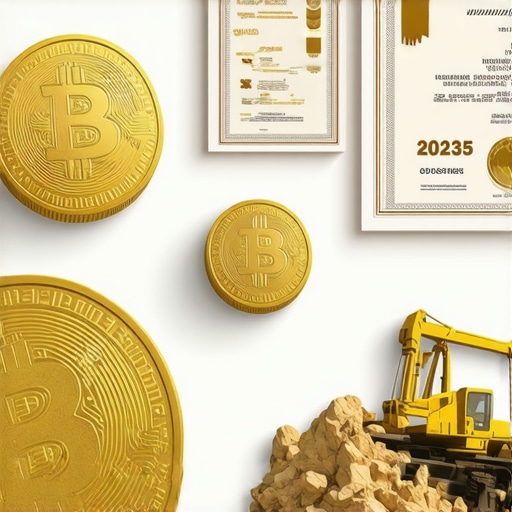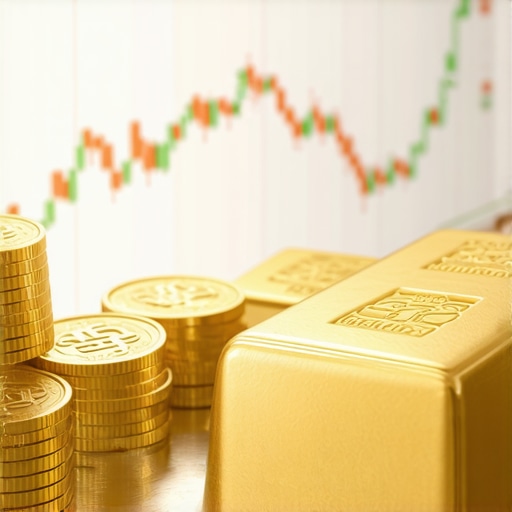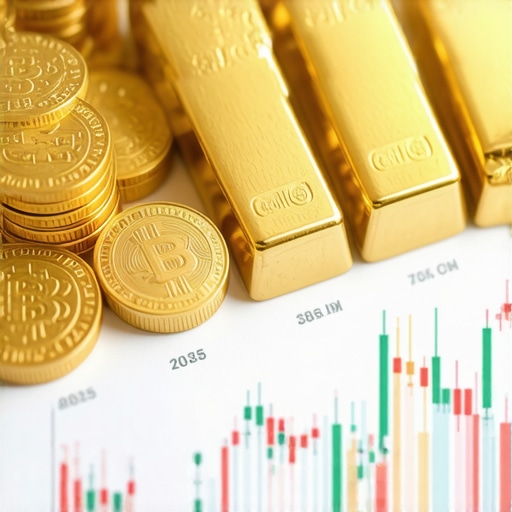Unlocking the Allure of Rare Gold Coins in 2025
For collectors and investors alike, investing in rare gold coins has emerged as a compelling strategy to diversify portfolios and preserve wealth amid economic uncertainties. Beyond the intrinsic value of gold, rare coins carry historical significance and rarity that can appreciate substantially over time. As we step into 2025, understanding the nuances of this niche market is crucial for maximizing returns and avoiding common pitfalls.
Decoding the Value: What Makes a Gold Coin Rare?
Not all gold coins are created equal. The rarity of a coin depends on several factors including mintage numbers, historical context, mint errors, and condition or grade. Coins like the 1933 Saint-Gaudens Double Eagle or the 1910 Indian Head Eagle are prized for their scarcity and provenance. Expert grading by organizations such as the Professional Coin Grading Service (PCGS) or Numismatic Guaranty Corporation (NGC) plays a pivotal role in authenticating and assessing coin quality, which directly impacts investment value.
How to Choose the Right Rare Gold Coins for Your Portfolio?
Investors often ask, “Which rare gold coins should I buy in 2025 to ensure strong returns?” The key lies in balancing historical significance with market demand. Focus on coins with proven auction track records and those that appeal to both collectors and investors. Researching trends in gold demand and supply provides insights into future price movements; for instance, the increasing interest in historic U.S. Mint issues or prominent international coins from the British Sovereign series. Consulting resources like expert-curated coin guides can further inform smart purchasing decisions.
Mastering Authentication and Avoiding Fraudulent Coins
In a market where counterfeit rare gold coins can undermine investments, thorough authentication is non-negotiable. Buyers should rely on reputable dealers and third-party grading services to verify coin authenticity. Leveraging ultraviolet light tests, magnetism checks, and weight assessments are practical steps collectors can use. For comprehensive dealer vetting, see our guide on selecting trusted gold dealers in 2025.
Storing and Insuring Your Rare Gold Coin Collection Safely
Proper storage extends beyond mere safekeeping — it preserves a coin’s condition, which is vital for maintaining its value. Consider investing in climate-controlled safes or bank safety deposit boxes. Additionally, insuring your collection against theft, loss, or damage is essential. Specialized insurance policies for rare coins can be tailored to cover fluctuations in market value, providing peace of mind to collectors.
What Are the Emerging Trends Impacting Rare Gold Coin Investments?
The rare gold coin market is influenced by global economic indicators, collector demographics, and changing gold demand trends. Central bank gold purchases and geopolitical uncertainties often drive up the appeal of tangible assets like rare coins. According to the World Gold Council, increasing interest in historical numismatics is expected to sustain demand into 2025 and beyond. Staying informed on these trends can empower collectors to time purchases optimally.
Ready to start or expand your rare gold coin collection? Share your experiences or questions below — your insights help build a knowledgeable community of savvy investors.
Understanding Market Liquidity for Rare Gold Coins
Liquidity is a critical consideration when investing in rare gold coins. Unlike bullion, rare coins may require more time to sell at their true market value due to the specialized nature of the market. Coins with higher demand among collectors tend to have better liquidity. For example, popular series like the American Gold Eagle or British Sovereign often trade more readily. However, ultra-rare coins might require auction sales or private deals, which can affect turnaround time and pricing. Investors should evaluate the ease of converting coins into cash without significant loss, balancing this against potential appreciation.
How Does Historical Provenance Influence Coin Valuation?
Historical provenance can significantly elevate a rare gold coin’s value. Coins with documented ownership by notable figures or those connected to significant historical events become highly sought after. For instance, a coin minted during a pivotal moment in history or one that belonged to a famous collection can command premium prices. This aspect not only adds monetary value but also emotional and cultural appeal, enriching the collector’s experience. Prospective investors should seek provenance certification when available to authenticate and enhance the coin’s legacy.
Exploring Tax Implications of Rare Gold Coin Investments
Tax treatment of rare gold coin investments varies by jurisdiction but is an essential element to consider for long-term profitability. In many countries, coins recognized as collectibles may be subject to higher capital gains tax rates compared to standard bullion. Understanding local tax laws, including exemptions and reporting requirements, can optimize investment outcomes. Consulting with a tax professional familiar with precious metals investments is advisable. Additionally, some investors utilize specialized accounts like Gold IRAs to gain tax advantages on gold holdings, details of which can be found in our guide on starting a Gold IRA.
What Innovations Are Shaping the Rare Gold Coin Market?
Technological advancements have begun influencing the rare gold coin market. Blockchain-based provenance tracking and digital certificates are emerging tools that improve transparency and combat counterfeiting. These innovations enhance buyer confidence and facilitate easier verification of authenticity and ownership history. Furthermore, online auction platforms have expanded market accessibility, connecting global buyers and sellers more efficiently. Staying abreast of such trends provides investors with strategic advantages in navigating this evolving landscape.
For a deeper dive into strategies tailored to precious metals, explore our comprehensive resources on gold investment tactics, which cover a range of approaches including rare coin acquisitions.
Have you considered rare gold coins as part of your investment portfolio? Share your thoughts or questions in the comments below to join the conversation and help others make informed decisions.
Unveiling the Risks: What Challenges Do Investors Face with Rare Gold Coins?
While rare gold coins offer enticing opportunities, it is imperative to understand the inherent risks that accompany this niche investment. Market volatility, fluctuating precious metal prices, and changing collector interests can all impact coin values. Additionally, the specialized nature of the numismatic market means that liquidity can be limited, making it challenging to sell coins quickly without sacrificing price. Investors must also be cautious of counterfeit coins and unscrupulous sellers, which remain persistent threats despite advances in authentication technology.
Moreover, grading discrepancies can cause valuation disputes; two reputable grading agencies may differ slightly, affecting market perception. Storage and insurance costs add to the total investment expenses, potentially reducing net returns if not carefully managed. Keeping abreast of market trends and maintaining a well-researched, diversified portfolio can help mitigate these risks effectively.
How Can Investors Protect Themselves from Counterfeit Rare Gold Coins?
To safeguard investments, buyers should always purchase rare gold coins from established dealers with verifiable reputations and verified credentials. Utilizing third-party grading services such as PCGS or NGC provides an additional layer of security by certifying authenticity and grade. Employing advanced verification tools like X-ray fluorescence (XRF) analyzers can non-destructively confirm metal composition, while blockchain provenance tracking is becoming an innovative method to ensure authenticity and ownership history.
Investors should also stay informed through reliable sources such as the Numismatics Wikipedia page, which provides foundational knowledge about coin collecting and authentication methods. Engaging with reputable collector communities can further enhance awareness of potential scams and emerging market insights.
Strategies to Maximize Returns: Timing and Market Insights
Optimizing gains from rare gold coin investments demands strategic timing aligned with market dynamics. Monitoring geopolitical events, central bank policies, and gold price fluctuations can signal advantageous entry or exit points. For example, periods of economic instability often trigger a surge in demand for tangible assets like rare coins, boosting their premiums.
Seasonal auction calendars and major numismatic events also influence liquidity and pricing. Participating in or closely following these auctions can reveal trending coins and emerging valuations. Additionally, diversifying across various coin types and historical periods may reduce exposure to single-market shocks.
As 2025 progresses, staying attuned to evolving collector preferences—such as increased interest in early 20th-century coins or newly discovered mint errors—can uncover underappreciated investment gems. Continual education and market analysis are keys to maintaining a competitive edge.
Have you encountered challenges or successes with rare gold coin investments? Share your experiences or questions below to contribute to our growing community of informed collectors and investors.
Leveraging Global Economic Indicators to Forecast Coin Value
Rare gold coin investors benefit greatly by understanding how macroeconomic factors influence coin prices. Inflation rates, currency fluctuations, and fiscal policies all impact gold demand, indirectly affecting rare coin valuations. For instance, rising inflation often leads to increased interest in tangible assets as hedges, boosting premium prices on collectible coins. Monitoring reports from institutions like the International Monetary Fund (IMF) provides valuable data to anticipate market shifts, enabling investors to time purchases and sales more effectively.
Integrating Blockchain Technology: Revolutionizing Provenance and Ownership
The integration of blockchain technology in the rare gold coin market is transforming how provenance and ownership are tracked. By embedding digital certificates on an immutable ledger, buyers gain enhanced transparency, reducing risks related to fraud and counterfeiting. This innovation streamlines due diligence and facilitates smoother transactions across international markets. As these systems gain adoption, early investors who utilize blockchain-verified coins may enjoy greater confidence and potentially higher valuations.
How Can Blockchain Certification Impact the Future of Rare Gold Coin Collecting?
Blockchain certification offers a tamper-proof record of a coin’s history and authenticity, which can drastically reduce disputes and enhance trust among buyers and sellers. By ensuring provenance is clear and unalterable, blockchain can also increase liquidity by simplifying verification processes, making rare coins more attractive to a broader audience. Collectors and investors interested in this technology should watch for emerging platforms that specialize in numismatic asset tracking to stay ahead of the curve.
Understanding the Role of Demographic Shifts in Collector Preferences
Demographic changes, including the rise of younger collectors with digital savviness, are reshaping demand patterns in the rare gold coin market. Millennials and Gen Z collectors often seek coins with compelling stories and are more inclined to engage via online auctions and social media communities. This shift prompts sellers to adopt digital marketing strategies tailored to a tech-focused audience, impacting which coins gain popularity and appreciation in value.
Engaging with reputable platforms like the Numismatic News can provide ongoing updates about market trends and collector demographics to inform your investment strategy.
Maximizing Engagement: Join the Conversation and Grow Your Expertise
Are you ready to embrace these innovations and demographic trends to enhance your rare gold coin investments? Share your thoughts, questions, or success stories in the comments below. Your participation helps build a vibrant community of knowledgeable collectors and investors navigating the evolving landscape together.
Frequently Asked Questions (FAQ)
What defines a gold coin as “rare”?
A rare gold coin’s rarity is determined by factors such as limited mintage, historical significance, mint errors, and exceptional condition or grading. These aspects combine to make certain coins highly sought after by collectors and investors.
How can I verify the authenticity of rare gold coins?
Authentication is best achieved through reputable third-party grading services like PCGS or NGC, combined with purchasing from trusted dealers. Advanced techniques such as X-ray fluorescence (XRF) analysis and blockchain provenance tracking further enhance verification.
Are rare gold coins a good hedge against inflation?
Yes, rare gold coins typically retain intrinsic value due to their gold content and collectibility, often appreciating during inflationary periods as tangible assets become more desirable.
What are the tax implications of investing in rare gold coins?
Tax treatment varies by jurisdiction but often classifies rare coins as collectibles, which may be subject to higher capital gains rates. Consulting a tax professional familiar with precious metals is recommended.
How liquid are rare gold coins compared to gold bullion?
Rare gold coins generally have lower liquidity than bullion due to their specialized market. Popular series offer better liquidity, but ultra-rare coins may require auctions or private sales, potentially increasing sale time.
Can blockchain technology improve rare gold coin investments?
Yes, blockchain enables tamper-proof provenance and ownership records, increasing transparency, reducing fraud risks, and potentially enhancing liquidity and market trust.
What storage methods are best for preserving rare gold coins?
Climate-controlled safes or safety deposit boxes are ideal to protect coins from environmental damage. Additionally, insuring the collection safeguards against theft or loss.
How do demographic trends affect the rare gold coin market?
Emerging younger collectors who favor digital engagement influence market demand and marketing strategies, often driving interest toward coins with compelling stories and online accessibility.
Where can I find reliable information and market updates on rare gold coins?
Authoritative sources like the World Gold Council, Numismatic News, and expert-curated coin guides provide valuable insights and current trend analysis.
What risks should I be aware of when investing in rare gold coins?
Risks include market volatility, counterfeit coins, grading discrepancies, liquidity constraints, and additional costs like storage and insurance. Thorough research and diversification help mitigate these risks.
Trusted External Sources
- World Gold Council – A global authority on gold market trends, providing data on gold demand and investment insights relevant to rare gold coins.
- Professional Coin Grading Service (PCGS) – Leading third-party grading organization that certifies coin authenticity and condition, crucial for assessing investment quality.
- Numismatic Guaranty Corporation (NGC) – Renowned grading service offering coin certification and market guidance for collectors and investors.
- International Monetary Fund (IMF) – Offers economic data and reports that help investors understand macroeconomic factors influencing gold prices.
- Numismatic News – Industry publication covering market trends, collector demographics, and auction results to inform investment decisions.
Conclusion
Investing in rare gold coins in 2025 presents a unique opportunity to combine the enduring value of gold with the allure of historical significance and scarcity. Understanding key factors such as authentication, market liquidity, tax implications, and emerging technologies like blockchain empowers investors to make informed choices. While risks exist, strategic timing, thorough research, and leveraging trusted sources can help maximize returns and preserve wealth. Whether you are a seasoned collector or new investor, engaging with the community and staying current on market trends will enhance your rare gold coin investment journey. Share your experiences, ask questions, or explore more to join the vibrant world of rare gold coin investing today.









